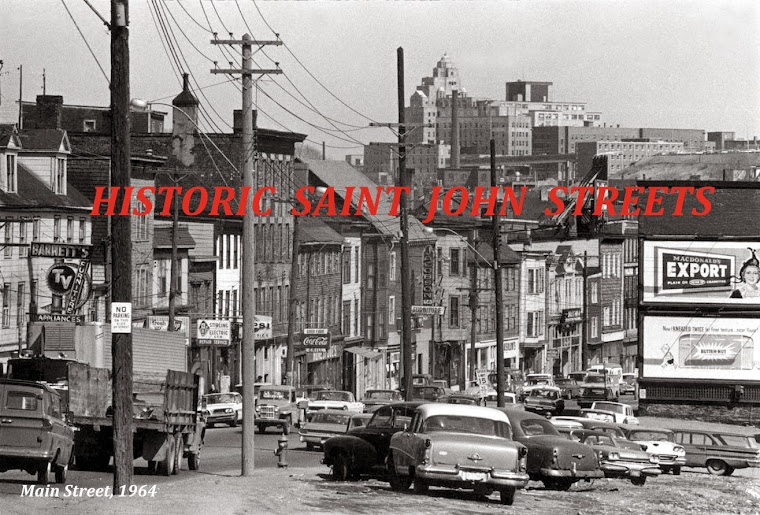In 1946 the City of Saint John published a set of proposals which were intended to radically reshape the structure and use of the inner core, and require all future developers to abide by a management plan which would govern thinking and investment for decades into the future. The plan would of course necessitate the demolition of much of the decrepit housing stock, "slums, the existence of which had become a great source of embarrassment and official anxiety. One of the great national rallying cries during WW2 was the promise of postwar "rebuilding". In Saint John the emphasis would be on eradicating traffic bottlenecks and the developing of modern residential nodes, which was being proto-typed with the Rockwood Court housing project, and Fundy Heights.
Almost all of the large scale proposals were never built, with the exception of the massive concrete viaduct on Mill Street, which would straddle the Valley and link the North End to the "Uptown". What Saint John planners did witness in the Atomic Era was a very large uptick in private automobile ownership. The old walking city became the driving city, and suddenly gas stations were everywhere - North, South, East, West and yes, several in the Valley.
It's fascinating to look over the surviving illustrations of what City Fathers hoped would become their "City of Tomorrow", a term not used in their report but very much in vogue in post-war North America.
In this interesting Birds Eye View of the "Central City," we see that the artist incorporated a mid-century concept of what a Harbour Bridge might look like. Note that Fort Howe was intended for development. What I find most significant is that planners had not yet given up on the Valley, and expected that it would to contribute to the city, as it had done for a century.
Saint John mayors and aldermen were in the habit of junketing to Boston and New York, so I must assume that at least a few of them took in the "
Futurama"exhibit at
New York's World Fair.
A good view of Market Slip and Market Square. Planners saw the old slip as an artifact, not the commercial hub it had been since since the Loyalist Era. Some creative had to be done with it.
More than anything else, Saint John planners wanted to get rid of the dangerous level crossing on Mill Street, in front of the train station.
The proposal for the great concrete Viaduct was the most important proposal which went forward. The removing of Hawker's Corner and connecting of Main Street to Mill Street above the rail tracks, was a great accomplishment, although within a decade the "new" viaduct was already considered outmoded.
Please refer to my article "
Terraforming the Old Saint John - Portland Valley"
I like this image of the Union Station section of the Valley, for several reasons. I find it highly amusing that the concept artist was directed to scrape clean all of the tenements existing on Main Street, Paradise Row and Rockland Road in 1946, but tiny Mission Church on Paradise Row is permitted to live on. That is a fair indication that in post war Saint John you could easily imagine dispossessing slum dwellers of their homes but you dare not mess with the established Church.
This is a map of proposed "neighborhood units". In the parlance of modern Canadian planning, they would be termed "Town Centres".
I also like this design for the proposed re-housing area East of Waterloo Street. Some of this was accomplished with the later Urban Renewal sweeps of the 1960s. The General Hospital has since been demolished but the Catholic cathedral and a few of the buildings which made up the old Catholic precinct, are still standing.
This image of what they proposed for the old Shamrock Park, a combined football and baseball facility, is noteworthy. There is an interesting story behind this, which I will tell sometime in
THE LOST VALLEY BLOG. For now it enough to remind you of what actually happened. Developers put in the
Fairview Shopping Plaza, and Shamrock Park was rebuilt in Indiantown.
This illustration is from an American magazine of 1946, and seems very relevant here. What really happened in Saint John after the war was that the citizen's took the development of the city in directions of their own choosing. It wasn't pretty but it was passionate. I can write without fear of contradiction that what most young entrepreneurs in the Loyalist City wanted above all was to own their own neighborhood filling station.
I hope you enjoyed this photo essay.
Ronald J. Jack
ronjackbc@yahoo.ca

























